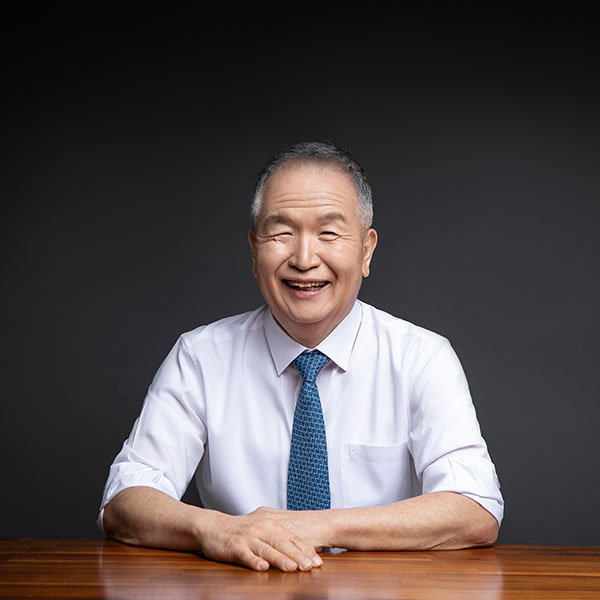
Eureka, HDL!
I was enlightened to learn that preventing chronic diseases depends on improving both the quality and quantity of HDL in the blood vessels, much like Van Gogh’s Starry Night.

Vincent van Gogh’s "Starry Night"

Byong Ku Lee’s "Starry HDL and Blood Vessels"
Eureka, HDL!
I knew nothing about HDL, LDL, or cholesterol until 1997, when I visited the Cuban National Scientific Research Institute.
When I asked, “Can consuming Cuban policosanol really improve diseased blood vessels?” the researchers showed me human trial results and related studies. They explained that animal experiments demonstrated Cuban policosanol raises HDL levels, removes cholesterol accumulated in vascular plaques (also called vascular acne), reduces lesion size, prevents atherosclerosis, and widens blood vessels to improve circulation. They also added that it helps prevent plaque rupture.
At the time, the term HDL was very unfamiliar to me, but I was completely captivated by their confident explanations and scientific data supporting that diseased vessels could indeed improve. That realization changed the course of my life and business. As I eagerly asked more questions about HDL, the Cuban experts patiently revealed its amazing secrets.
HDL cholesterol, which removes cholesterol from blood vessels, is a key component of cell membranes and an essential substance for hormone production. However, excessive cholesterol accumulates in blood vessels, narrowing them and increasing the risk of cardiovascular disease. At this point, HDL plays the crucial role of removing or transporting cholesterol that remains or accumulates in the vessels out of the body.
LDL and HDL are carriers that transport cholesterol. LDL delivers cholesterol to various cells and tissues, while HDL returns cholesterol remaining in the vessels or deposited in plaques back to the liver or expels it from the body. Because of this, HDL is often called the “cholesterol cleaner.”
The problem is that after growth, HDL levels gradually decrease starting from the twenties, leading to inadequate cholesterol removal, vessel narrowing, and high blood pressure. However, Cuban policosanol lowers LDL—the main culprit in vessel blockage—and raises HDL, helping to prevent cardiovascular disease.

20s blood vessel

40s blood vessel

Vascular plaque rupture
The most important role of HDL is to transport cholesterol accumulated in vascular plaques (like pimples) back to the liver.
This helps prevent hypertension and cardiovascular and cerebrovascular diseases.

The longevity factor HDL clears cholesterol buildup in the blood vessels, widening them and improving blood flow.
Meeting with an HDL Expert
During the time when we were actively promoting advertisements claiming that Cuban policosanol raises HDL levels based on firm belief in the product, I was contacted by a newspaper. Professor Kyung-Hyun Cho from the Department of Biomedical Science and Biotechnology at Yeungnam University wanted to meet me in person. Although he had been researching HDL for a long time, he said he had not found any substance that effectively increases HDL levels. Then he became interested in Cuban policosanol and expressed his strong desire to research it if he could obtain the raw material.
I deeply resonated with Professor Cho’s passion and expertise and promised full support. This marked the beginning of research that culminated in 2019 with significant results. Professor Cho’s research team discovered, for the first time in the world, that taking 20mg of Cuban policosanol simultaneously improves both the quantity and quality of HDL and lowers systolic and diastolic blood pressure. This finding was published in an SCI-level international academic journal and the data was submitted to the Korean Ministry of Food and Drug Safety, leading to official recognition that it “may help control blood pressure.” To my knowledge, Cuban policosanol is the only single ingredient that improves dyslipidemia and blood pressure.
Establishment of Korea’s First HDL Research Institute
Professor Cho and I decided to join forces and establish the first HDL research institute in South Korea. When we calculated the required funding, it amounted to about 30 million USD, which all company executives opposed. They argued that investing in a research institute with no guaranteed profit at a time when the company had just entered a stable phase was reckless. Indeed, the amount was far beyond typical R&D investment ratios even for large corporations.
However, this time I stood firm on my conviction. I believed that objectively proving what I was confident about would provide stronger business momentum. As a company that must deeply understand its products, I regarded the establishment of the research institute as an investment in the future.
Despite much opposition, Professor Cho and I trusted each other and decided to follow our beliefs. The biggest difference between the Cuban National Scientific Research Institute and Professor Cho’s research was the ability to directly observe HDL particles. To verify this, I boldly invested several hundred thousand dollars in equipment such as transmission electron microscopes. As a result, our research institute scientifically demonstrated that increasing HDL levels improves atherosclerosis, which in turn lowers blood pressure and contributes to chronic disease prevention.
Professor Cho has published over 180 research papers in SCI-level journals over the past 33 years in the field of HDL. He has been recognized as one of the top 1% researchers worldwide, ranked within the top 0.27% in Biochemistry & Molecular Biology, 0.09% in Nutrition, and 0.45% in Biomedical Research.
The Only Place Worldwide to See HDL Particles - RAYDEL HDL Research Institute.
Comparison of Good HDL and Bad HDL (electron microscope 600,000x)

Bigger size, beautifully distinct and round shape and evenly distribution. Many particle number

Smaller size, ugly ambiguous and distorted shape and aggregated. Less particle number
Byong Ku Lee: 2021~2025 change of HDL quantity and quality (electron microscope 150,000×)



